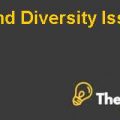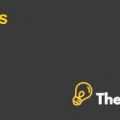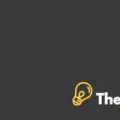Zoom Snowboards Case Study Solution
Engagement Overview
The purpose of this memo is to document an assessment of the significant issue and the risks relevant to consider for the audit and propose strategies in response to the identified risk, in addition these matters needs to be discussed with the audit committee are also highlighted.
Bill and Emma'sGage currently own 50 percent of the common share of the Snowboard Company founded in 1992 and mainly design, manufacture, and market the high-end customized snowboards. The remaining 50 percent held by the equity investor. Thus primary user of the financial statement are board of director, the investor, zoom management and the bank who have provided the credit
Engagement Risk
Assessment of audit risk is performed in order to avoid auditor’s failure to detect material matters misstatement, either due to both fraud and error.However, during the assessment significant Audit risk and control risk are identified. Auditor risk is directly proportional to control risk, as control risk is the risk in which the company may not identify and correct the misstatement because of having loose internal control.
Zoom Snowboards Harvard Case Solution & Analysis
While assessing the risk profile, it was found that Grand and Hall is providing services as auditor since 2003. This arises a familiarity threat because of having along relationship between the auditor and the client. In case familiarity threat arises grand and hall’s auditor may lose his independence and objectivity due to conflict of interest. If zoom control is not implemented as required, it means the auditor will be facing chances of having a misstated balance.
During the examination of risk, it was found Zoom have a weak corporate structure. Corporate governance is the system by which companies are directed and controlled. The weak corporate structure is a sign of facing greater audit risk as the company will have loose controls.
During the interim audit, it was known that some payments that are received from the clients are not accounted, and marked as bad debts. Here is the risk of misappropriation of Zooms assets by the employees, as the payment market as bad debt although the client is claiming that the payment has been made.
During the interim audit, it was found that billing program has some errors in the updating of prices increased, which was corrected by Florence the CFO of the company although it was not in her job requirement,it means that the system has unauthorized access. Unauthorized access may lead to error or fraud in the system. As one can make changes in client’s billing without following standard price and can give the illegal advantage to the buyer.
During the assessment, it was found that internal auditor of the company who is a recent graduate have several years of experience in the same industry and is working closely with the CFO. Here is the risk that internal auditor work is limited or compromised, although internal auditor scope of work and independence must be set and supervised by the Audit committee.
Materiality level
According to ISA 320 materiality can be set by the auditor consisting of any one percent of the revenue, five percent of profit before tax and one to two percent of total assets. In the case of zoom, it is appropriate to compute materiality on the revenue as it seems to be the apple of eye for the user. Twenty-seven hundred and eighty-four will be the planning materiality of Zoom and it will affect the opinion if the aggregate of misstatement is more. Tolerable error percentage is needed to be set on fifty percent which makes performance materiality to thirteen hundred and ninety-two, which should be reduced/increase according to risk reduction/increase respectively.
Financial Reporting risk
During assessment numerous risks related to the entity’s environment and internal control were also identified.............
This is just a sample partial case solution. Please place the order on the website to order your own originally done case solution.









